Name Ellen White | Role Author | |
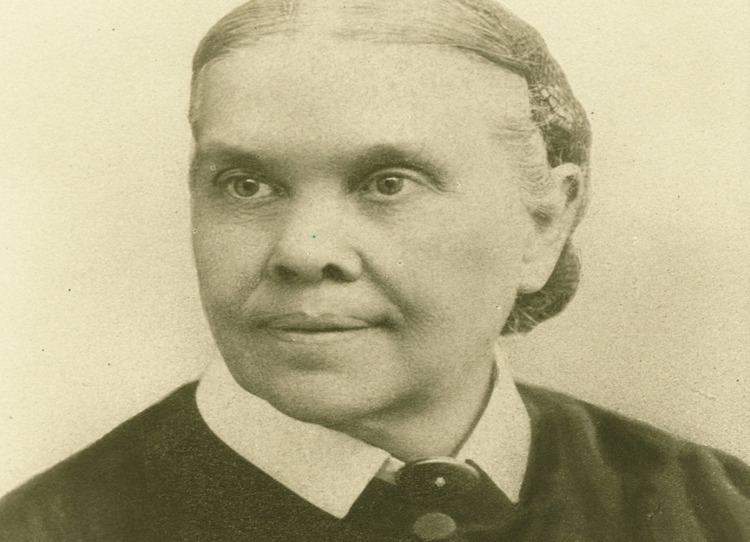 | ||
Full Name Ellen Gould Harmon Children Henry NicholsJames Edson WhiteWilliam C. WhiteJohn Herbert Books Great Controversy: The Stor, The Desire of Ages, Steps to Christ, Early writings of Ellen G, The Ministry of Healing Similar People James Springer White, William Miller, Joseph Bates, J N Andrews, William C White | ||
Ellen g white the woman ellen g white documentary
Ellen Gould White (née Harmon; November 26, 1827 – July 16, 1915) was a prolific author and an American Christian pioneer. Along with other Sabbatarian Adventist leaders such as Joseph Bates and her husband James White, she formed what became known as the Seventh-day Adventist Church. The Smithsonian magazine named Ellen G. White among 100 Most Significant American Figures, in an acknowledgement of her influence on religion.
Contents
- Ellen g white the woman ellen g white documentary
- Weakest of the weak 3
- Early life
- Ancestry
- Head injury
- Millerite movement
- Marriage and family
- Final years and death
- Visions
- Physical phenomena during visions
- First vision
- Second and third visions
- Public testimony
- Middle life
- Later ministry
- Final years
- Personality and public persona
- Theology
- Education
- Health reform
- Major writings
- Conflict of the Ages book series
- Historic legacy
- Ellen G White Estate
- Adventist historic sites
- Avondale College
- Biographical writings
- Theatre
- Film
- Examination of the prophetic value of her writings
- Adventist statement of belief about the Spirit of Prophecy
- Criticism
- Mental illness
- Plagiarism
- Not supporting teaching of the Trinity
- Views on masturbation
- Racism
- Responses to criticism
- References
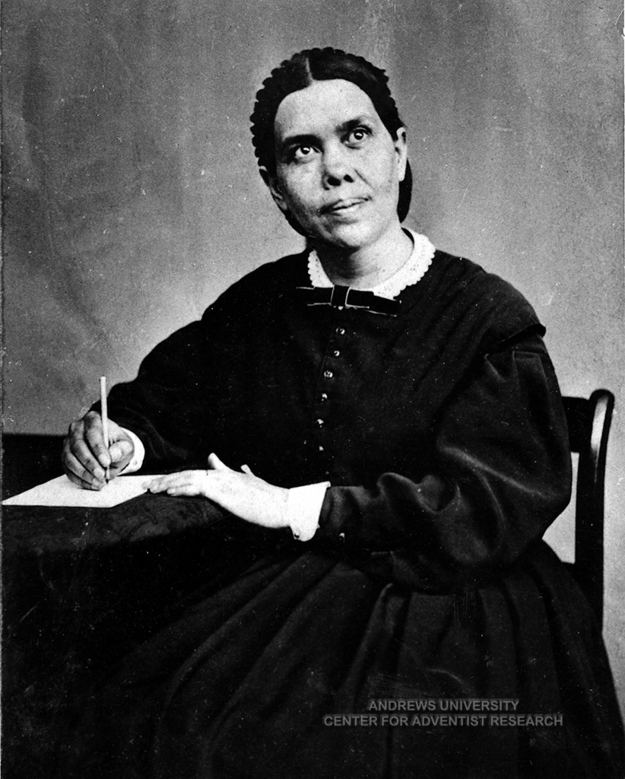
White reported her visionary experiences to her fellow believers. James White and others of the Adventist pioneers viewed these experiences as the Biblical gift of prophecy as outlined in Revelation 12:17 and Revelation 19:10 which describe the testimony of Jesus as the "spirit of prophecy". Her Conflict of the Ages series of writings endeavor to showcase the hand of God in Biblical history and in church history. This cosmic conflict, referred to by Seventh-day Adventist theologians as the "Great Controversy theme", became foundational to the development of Seventh-day Adventist theology. Her book on successful Christian living, Steps to Christ, has been published in more than 140 languages.
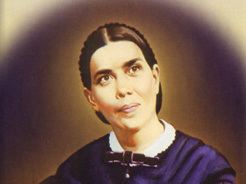
White was considered a somewhat controversial figure by her critics, with much of the controversy centering on her reports of visionary experiences and on the use of other sources in her writings. She experienced her first vision soon after the Millerite Great Disappointment of 1844. Historian Randall Balmer has described White as "one of the more important and colorful figures in the history of American religion". Walter Martin described her as "one of the most fascinating and controversial personages ever to appear upon the horizon of religious history". Arthur L. White, her grandson and biographer, writes that Ellen G. White is the most translated female non-fiction author in the history of literature, as well as the most translated American non-fiction author of either gender. Her writings covered a broad range of subjects, including religion, social relationships, prophecy, publishing, nutrition, creationism, agriculture, theology,Social justice, evangelism, Christian lifestyle, education and health. She advocated vegetarianism. She promoted and was instrumental in the establishment of schools and medical centers. During her lifetime she wrote more than 5,000 periodical articles and 40 books. As of 2015 more than 100 White titles are available in English, including compilations from her 100,000 pages of manuscript. Some of her other notable books include The Desire of Ages and The Great Controversy.
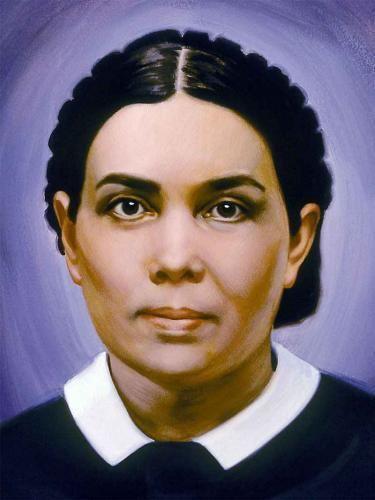
Weakest of the weak 3
Early life
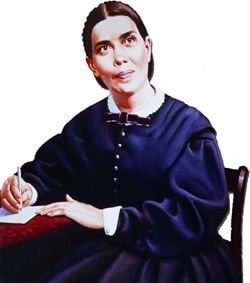
Ellen and her twin sister Elizabeth, were born November 26, 1827, to Robert and Eunice Harmon at a home on Rte. 114 in Gorham, Maine. Robert was a farmer who also made hats using mercuric nitrate. Much of Ellen's youth was spent in the business pursuit of her father's hat making business. Ellen learned the simplest part of it, which was shaping the crown of the hat.
Ancestry
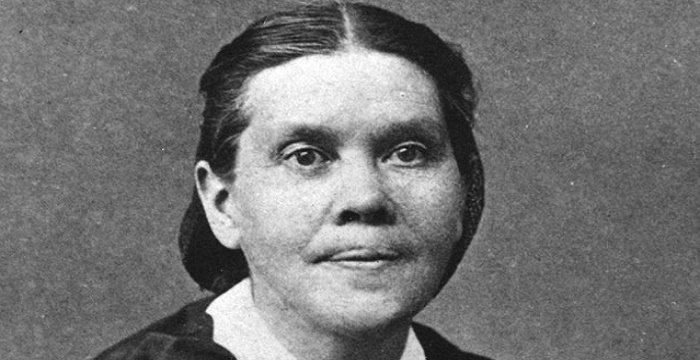
In 1999, Charles E. Dudley, Sr., published a book entitled, The Genealogy of Ellen Gould Harmon White: The Prophetess of the Seventh-day Adventist Church, and the Story of the Growth and Development of the Seventh-day Adventist Denomination As It Relates to African-Americans. In his book, Charles Dudley claims that Ellen White had an African-American ancestry.

In March 2000, the Ellen G. White Estate commissioned Roger D. Joslyn, a professional genealogist, to research Ellen G. White's ancestry. Joslyn concluded that she was of Anglo-Saxon origin. Joslyn found that Ellen's mother, Eunice (Gould) Harmon was the daughter of Joseph Goold/Gould, an American Revolutionary soldier. After the war, he moved from Kittery to Portland, Maine. His father was Joseph Gould of Kittery. His father, Ellen's great grandfather, was also named Joseph Gould. He settled in Kittery in the first decade of the 1700s and was probably from Taunton, Massachusetts. His father was John Gould of Taunton and probably the one born in Hingham, Massachusetts Bay Colony, son of Jarvis Gould, a 1635 immigrant from England. See her ancestral chart
Head injury

At the age of nine, White was running towards home with her sister Elizabeth and another friend when an older classmate shouted some angry words and threw a stone that hit her in the face (The Early Years, page 28, Arthur L. White). This occurred while she was living in Portland, Maine and likely attending the Bracket Street School.
White would later write of her conversion experience that happened a few years after the incident:
"This misfortune, which for a time seemed so bitter and was so hard to bear, has proved to be a blessing in disguise. The cruel blow which blighted the joys of earth, was the means of turning my eyes to heaven. I might never had known Jesus Christ, had not the sorrow that clouded my early years led me to seek comfort in him."She felt that she might be dying, and believing she was about to die, the 9-year-old Ellen in simple faith confessed her sins. A few years after her injury, Ellen, with her parents, attended a Methodist camp meeting at Buxton, Maine, and there, at the age of 12, a breakthrough occurred in which she had a conversion experience and felt at peace.
Millerite movement
In 1840, at age 12, her family became involved with the Millerite movement. As she attended William Miller's lectures, she felt guilty for her sins, and was filled with terror about being eternally lost. She describes herself as spending nights in tears and prayer, and being in this condition for several months. On June 26, 1842, She was baptized by John Hobart in Casco Bay in Portland, Maine, and eagerly awaited Jesus to come again. In her later years, she referred to this as the happiest time of her life. Her family's involvement with Millerism caused them to be disfellowshipped by the local Methodist church.
Marriage and family
Sometime in 1845 Ellen Harmon came into contact with her future husband James Springer White, a Millerite who became convinced that her visions were genuine. A year later James proposed and they were married by a justice of the peace in Portland, Maine, on August 30, 1846. James later wrote:
We were married August 30, 1846, and from that hour to the present she has been my crown of rejoicing....It has been in the good providence of God that both of us had enjoyed a deep experience in the Advent movement....This experience was now needed as we should join our forces and, united, labor extensively from the Atlantic Ocean to the Pacific....
The Whites had four sons: Henry Nichols, James Edson (known as Edson), William Clarence (known as Willie or W. C.), and John Herbert.
Only Edson and William lived to adulthood. John Herbert died of erysipelas at the age of three months, and Henry died of pneumonia at the age of 16 [White Estate Biography] in 1863.
Final years and death
White spent the final years of her life in Elmshaven, her home in Saint Helena, California after the death of her husband James White in 1881. During her final years she would travel less frequently as she concentrated upon writing her last works for the church. She died July 16, 1915, at her home in Elmshaven, which is now an Adventist Historical Site. After three funerals, she was buried with her husband James White in Oak Hill Cemetery, Battle Creek, Michigan.
Visions
From 1844 to 1863 White experienced between 100 and 200 visions, typically in public places and meeting halls. She had one that led to the writing of The Great Controversy at an Ohio funeral service held on a Sunday afternoon in March, 1858, in the Lovett's Grove (now Bowling Green) public school, a vision of the ages-long conflict between Christ and His angels and Satan and his angels was given to Mrs. White. In later life, the visions occurred at home during the night. From the time she was 17 years old until she died 70 years later, she had approximately 2,000 visions and dreams. The visions varied in length from less than a minute to nearly four hours. The knowledge and counsel received through these revelations are reflected in the books and many articles she wrote.
Physical phenomena during visions
J. N. Loughborough, who had seen White in vision 50 times since 1852, and her husband, James White, listed several physical characteristics that marked the visions:
- “In passing into vision, she gives three enrapturing shouts of “Glory!” which echo and re-echo, the second, and especially the third, fainter but more thrilling than the first, the voice resembling that of one quite a distance from you, and just going out of hearing.”
- For a few seconds she would swoon, having no strength. Then she would be instantly filled with superhuman strength, sometimes rising to her feet and walking about the room. She frequently moved hands, arms, and head in gestures that were free and graceful. But to whatever position she moved a hand or arm, it could not be hindered nor controlled by even the strongest person. In 1845, she held her parents' 18.5 pound family Bible in her outstretched left hand for half an hour. She weighed 80 pounds at the time.
- She did not breathe during the entire period of a vision that ranged from fifteen minutes to three hours. Yet, her pulse beat regularly and her countenance remained pleasant as in the natural state.
- Her eyes were always open without blinking; her head was raised, looking upward with a pleasant expression as if staring intently at some distant object. Several physicians, at different times, conducted tests to check her lack of breathing and other physical phenomena.
- She was utterly unconscious of everything transpiring around her, and viewed herself as removed from this world, and in the presence of heavenly beings.
- When she came out of vision, all seemed total darkness whether in the day time or a well-lighted room at night. She would exclaim with a long-drawn sigh, as she took her first natural breath, “D-a-r-k.” She was then limp and strengthless.
Mrs. Martha Amadon added: “There was never an excitement among those present during a vision; nothing caused fear. It was a solemn, quiet scene.“
First vision
In 1844, White experienced her first vision.
At this time I visited one of our Advent sisters, and in the morning we bowed around the family altar. It was not an exciting occasion, and there were but five of us present, all females. While praying, the power of God came upon me as I never had felt it before, and I was wrapt up in a vision of God's glory, and seemed to be rising higher and higher from the earth and was shown something of the travels of the Advent people to the Holy City...
In this vision the "Advent people" were traveling a high and dangerous path towards the city of New Jerusalem [heaven]. Their path was lit from behind by "a bright (light)...which an angel told me was the midnight cry." Some of the travelers grew weary and were encouraged by Jesus; others denied the light, the light behind them went out, and they fell "off the path into the dark and wicked world below." The vision continued with a portrayal of Christ’s second coming, following which the Advent people entered the New Jerusalem; and ended with her returning to earth feeling lonely, desolate and longing for that "better world."
As Godfrey T. Anderson said, "In effect, the vision assured the Advent believers of eventual triumph despite the immediate despair into which they had plunged."
Second and third visions
In February 1845, White experienced her second vision in Exeter, Maine known as the "Bridegroom" vision. Together with the third vision about the new earth, the visions "gave continued meaning to the October 1844 experience and supported the developing sanctuary rationale. Additionally they played an important role in countering the spiritualizing views of many fanatical Adventists by portraying the Father and Jesus as literal beings and heaven as a physical place."
Public testimony
Fearing people would not accept her testimony, White did not initially share her visions with the wider Millerite community. In a meeting at her parent’s home when she received what she regarded as confirmation of her ministry:
While praying, the thick darkness that had enveloped me was scattered, a bright light, like a ball of fire, came towards me, and as it fell upon me, my strength was taken away. I seemed to be in the presence of Jesus and the angels. Again it was repeated, ‘Make known to others what I have revealed to you.’
Soon White was giving her testimony in public meetings — some of which she arranged herself — and in her regular Methodist class meetings in private homes.
I arranged meetings with my young friends, some of whom were considerably older than myself, and a few were married persons. A number of them were vain and thoughtless; my experience sounded to them like an idle tale, and they did not heed my entreaties. But I determined that my efforts should never cease till these dear souls, for whom I had so great an interest, yielded to God. Several entire nights were spent by me in earnest prayer for those whom I had sought out and brought together for the purpose of laboring and praying with them.
News of her visions spread and White was soon traveling and speaking to groups of Millerite followers in Maine and the surrounding area. Her visions were not publicized further afield until January 24, 1846, when her account of the first vision: "Letter From Sister Harmon" was published in the Day Star, a Millerite paper published in Cincinnati, Ohio by Enoch Jacobs. White had written to Jacobs to encourage him and although she stated the letter was not written for publication, Jacobs printed it anyway. Through the next few years it was republished in various forms and is included as part of her first book, Christian Experience and Views, published in 1851.
Two Millerites claimed to have had visions prior to White – William Ellis Foy (1818–1893), and Hazen Foss (1818?–1893), White's brother-in-law. Adventists believe the prophetic gift offered to these two men was passed on to White when they rejected it.
Middle life
White described the vision experience as involving a bright light which would surround her and she felt herself in the presence of Jesus or angels who would show her events (historical and future) and places (on earth, in heaven, or other planets). The transcriptions of White's visions generally contain theology, prophecy, or personal counsels to individuals or to Adventist leaders. One of the best examples of her personal counsels is found in a 9-volume series of books entitled Testimonies for the Church, that contains edited testimonies published for the general edification of the church. The spoken and written versions of her visions played a significant part in establishing and shaping the organizational structure of the emerging Adventist Church. Her visions and writings continue to be used by church leaders in developing the church's policies and for devotional reading.
On March 14, 1858, at Lovett's Grove, near Bowling Green, Ohio, White received a vision while attending a funeral service. On that day James White wrote that "God manifested His power in a wonderful manner" adding that "several had decided to keep the Lord's Sabbath and go with the people of God." In writing about the vision, she stated that she received practical instruction for church members, and more significantly, a cosmic sweep of the conflict "between Christ and His angels, and Satan and his angels." Ellen White would expand upon this great controversy theme which would eventually culminate in the Conflict of the Ages series.
From 1861 to 1881 White's prophetic ministry became increasingly recognized among Sabbatarian Adventists. Her frequent articles in the Review and Herald (now the Adventist Review) and other church publications were a unifying influence to the beginning church. She supported her husband in the church's need for formal organization. The result was the organization of the Seventh-day Adventist Church in 1863. During the 1860s and 1870s the Whites participated in the founding of the denomination's first medical institution (1866) and school (1874). Her books on education and publishing have been influential on Christian education and publishing systems in the U.S., Europe, and Australia. White is the most translated American non-fiction author of all time - with 100,000 pages of manuscript, 40 books, with the book Steps to Christ being translated into more than 140 languages.
Later ministry
After 1882 White was assisted by a close circle of friends and associates. She employed a number of literary assistants who would help her in preparing her writings for publications. She also carried on an extensive correspondence with church leaders. She traveled to Europe on her first international trip. Upon her return she promoted the message of righteousness by faith presented by young ministers E. J. Waggoner and A. T. Jones, leading to a more Christ-centered theology for the church. When church leaders resisted her counsel on this and various other matters, she was sent to Australia as a missionary. There she lived first in Melbourne and later moved to Cooranbong, New South Wales; co-founding Avondale College. After almost 9 years she returned to the US.
Final years
When White returned to the US in 1900, she thought her stay would be temporary, and she called for church re-organization at the pivotal 1901 General Conference Session. During her later years she wrote extensively for church publications and wrote her final books. During her final years she would travel less frequently as she concentrated upon writing her last works for the church. In 1915, White tripped while entering her study room and broke her hip. Her health subsequently began to decline, and she died on July 16, 1915. After three funeral services, she was buried at Oak Hill Cemetery with her husband.
Personality and public persona
White was a powerful and sought after preacher. While she has been perceived as having a strict and serious personality, perhaps due to her lifestyle standards, numerous sources describe her as a friendly person.
Theology
Jerry Moon argues that White taught assurance of salvation. Arthur Patrick believes that White was evangelical, in that she had high regard for the Bible, saw the cross as central, supported righteousness by faith, believed in Christian activism, and sought to restore New Testament Christianity.
Education
White's earliest essays on education appeared in the 1872 autumn editions of the Health Reformer. In her first essay she stated that working with youthful minds was the most delicate of tasks. The manner of instruction should be varied. This would make it possible for the "high and noble powers of the mind" to have a chance to develop. To be qualified to educate the youth (she wrote), parents and teachers must have self-control, gentleness and love.
White's idea of creating a Christian educational system and its importance in society is detailed in her writings Christian Education (1893, 1894) and Education (1903).
Health reform
White expounded greatly on the subject of health and nutrition, as well as healthy eating and a balanced diet. At her behest, the Seventh-day Adventist Church first established the Western Health Reform Institute in Battle Creek, Michigan in 1866 to care for the sick as well as to disseminate health instruction. Over the years, other Adventist sanitariums were established around the country. These sanitariums became hospitals, forming the backbone of the Adventists' medical network and, in 1972, forming the Adventist Health System.
The beginnings of this health ministry are found in a vision that White had in 1863. The vision was said to have occurred during a visit by James and Ellen White to Otsego, Michigan to encourage the evangelistic workers there. As the group bowed in prayer at the beginning of Sabbath, Ellen White reportedly had a vision of the relation of physical health to spirituality, of the importance of following right principles in diet and in the care of the body, and of the benefits of nature's remedies—clean air, sunshine, exercise and pure water. Previous to this vision, little thought or time had been given to health matters in the church, and several of the overtaxed ministers had been forced to become inactive because of sickness. This revelation on June 6, 1863 impressed upon the leaders in the newly organized church the importance of health reform. In the months that followed, as the health message was seen to be a part of the message of Seventh-day Adventists, a health educational program was inaugurated. An introductory step in this effort was the publishing of six pamphlets of 64 pages each, entitled, Health, or How to Live, compiled by James and Ellen White. An article from White was included in each of the pamphlets. The importance of health reform was greatly impressed upon the early leaders of the church through the untimely death of Henry White at the age of 16, the severe illness of Elder James White, which forced him to cease work for three years, and through the sufferings of several other ministers.
Early in 1866, responding to the instruction given to White on Christmas Day in 1865 that Seventh-day Adventists should establish a health institute for the care of the sick and the imparting of health instruction, plans were laid for the Western Health Reform Institute, which opened in September, 1866. While the Whites were in and out of Battle Creek from 1865 to 1868, James White's poor physical condition led them to move to a small farm near Greenville, Michigan.
White's idea of health reform included vegetarianism in a day and age where "meat and two vegetables" was the standard meal for a typical North American. Her health message inspired a health food revolution starting with John Harvey Kellogg in his creation of Corn Flakes. The Sanitarium Health Food Company as it is now known was also started by this health principle. Adhering to the principles outlined in the health reform, John Harvey Kellogg differed from his brother's views on the sugar content of their Corn Flake breakfast cereal. The latter started Kellogg Company. White championed a vegetarianism that was intended to be not only physically, but also spiritually helpful to humans, and also to treat God's creatures with love and respect.
Her views are expressed in many of her writings such as Important Facts Of Faith: Laws Of Health, And Testimonies, Nos. 1–10 (1864), Healthful Living (1897, 1898), The Ministry of Healing (1905), The Health Food Ministry (1970), and Counsels on Diet and Foods (1938).
Major writings
Some of her most well known books are:
Conflict of the Ages book series
During her lifetime White wrote more than 5,000 periodical articles, 40 books, and reported over 2000 visions and dreams, most of which she was convinced were communications with supernatural entities including various angels and sometimes Jesus. Today over 100 titles are available in English, including compilations from her 50,000 manuscript pages.
External book links are to the official Ellen White website. The Conflict of the Ages volumes are also available as E-books.
A collection of Ellen G. White's works are available in a variety of formats and in many languages at egwwritings.org. Books, articles, letters and audio books are all maintained by the Ellen G White Estate.
Historic legacy
According to one evangelical author, "No Christian leader or theologian has exerted as great an influence on a particular denomination as Ellen White has on Adventism." Additional authors have stated "Ellen G. White has undoubtedly been the most influential Seventh-day Adventist in the history of the church."
Ellen G. White Estate
The Ellen G. White Estate, Inc., was formed as a result of White's will. It consists of a self-perpetuating board and a staff which includes a secretary (now known as the director), several associates, and a support staff. The main headquarters is at the Seventh-day Adventist General Conference headquarters in Silver Spring, Maryland. Branch Offices are located at Andrews University, Loma Linda University, and Oakwood University. There are 15 additional research centers located throughout the 13 remaining divisions of the world church. The mission of the White Estate is to circulate Ellen White's writings, translate them, and provide resources for helping to better understand her life and ministry. At the Toronto General Conference Session (2000) the world church expanded the mission of the White Estate to include a responsibility for promoting Adventist history for the entire denomination.
Adventist historic sites
Several of. White's homes are historic sites. The first home that she and her husband owned is now part of the Historic Adventist Village in Battle Creek, Michigan. Her other homes are privately owned with the exception of her home in Cooranbong, Australia, which she named "Sunnyside," and her last home in Saint Helena, California, which she named "Elmshaven". These latter two homes are owned by the Seventh-day Adventist Church and the "Elmshaven" home is also a National Historic Landmark.
Avondale College
White inspired and guided the foundation of Avondale College, Cooranbong, leaving an educational legacy from her time in Australia. Avondale College is the main Seventh-day Adventist tertiary institution in the South-Pacific Division.
Biographical writings
The most comprehensive biography of White is an extensive six-volume work called "Ellen G. White: A Biography" written by her grandson, Arthur L. White. Thousands of articles and books have been written about various aspects of Ellen G. White's life and ministry. A large number of these can be found in the libraries at Loma Linda University and Andrews University, the two primary Seventh-day Adventist institutions with major research collections about Adventism. An "Encyclopedia of Ellen G. White" is being produced by two faculty at Andrews University: Jerry Moon, chair of the church history department, and Denis Fortin, dean of the Seventh-day Adventist Theological Seminary.
Theatre
Red Books: Our Search for Ellen White is a play about White, a co-founder of the Seventh-day Adventist Church, and the various perceptions of her throughout the history of the church. It was produced by the Dramatic Arts Society of Pacific Union College in California. It was based on interviews collected from over 200 individuals. The title derives from White's books, which were traditionally bound with a red cover.
Film
Produced by the Seventh-Day Adventist church in 2016, the movie "Tell the World" exemplifies the humble beginnings of the Worldwide SDA Church. This film chronicles the life of Ellen G. White, "Her guidance and advice, obtained through Bible studies, as well as dreams and visions revealed by God, guided the steps of the Church in becoming a worldwide movement of compassion in the areas of health, education, community development and disaster relief." Today, the Seventh-day Adventist church has grown to nearly 20 million members in hundreds of countries.
Examination of the prophetic value of her writings
Most Adventists believe White's writings are inspired and continue to have relevance for the church today. Because of criticism from the evangelical community, in the 1940s and 1950s church leaders such as LeRoy Edwin Froom and Roy Allan Anderson attempted to help evangelicals understand Seventh-day Adventists better by engaging in extended dialogue that resulted in the publication of Questions on Doctrine (1956) that explained Adventist beliefs in evangelical language.
Evangelical Walter Martin of the countercult Christian Research Institute "rejected White’s prophetic claims", yet saw her "as a genuine Christian believer", unlike her contemporaries Joseph Smith, Mary Baker Eddy, and Charles Taze Russell. Kenneth Samples, a successor of Martin in his interaction with Adventism, also denies White's prophetic claims yet "believe[s] she, at minimum, had some good biblical and theological instincts."
Adventist statement of belief about the Spirit of Prophecy
White's writings are sometimes referred to as the Spirit of Prophecy by Adventists. The term is dually applied to the Holy Spirit which inspired her writings.
Early Sabbatarian Adventists, many of whom had come out of the Christian Connexion, were anti-creedal. However, as early as 1872 Adventists produced a statement of Adventist beliefs. This list was refined during the 1890s and formally included in the SDA Yearbook in 1931 with 22 points. In 1980 a statement of 27 Fundamental Beliefs was adopted, to which one was added to in 2005 to make the current list of fundamental beliefs. White is referenced in the fundamental belief on spiritual gifts. This doctrinal statement says:
"One of the gifts of the Holy Spirit is prophecy. This gift is an identifying mark of the remnant church and was manifested in the ministry of Ellen G. White. As the Lord's messenger, her writings are a continuing and authoritative source of truth which provide for the church comfort, guidance, instruction, and correction. They also make clear that the Bible is the standard by which all teaching and experience must be tested. (Joel 2:28,29; Acts 2:14–21; Hebrews 1:1–3; Revelation 12:17; 19:10.)"
Criticism
Ellen Harmon's critics cast doubt as to the reliability and authenticity of her visions, and the most prominent critic was Dudley M. Canright, a minister she treated as a son who left the church and came back but then apostatized and began to write books critical of the church, and some focused on Ellen White such as his 1919 book, Life of Mrs. E.G. White, Seventh-day Adventist Prophet: Her False Claims Refuted. Canright's books served as a basic text for many of White's later critics. Some of the criticisms include:
Mental illness
Canright, after he left the church, claimed that she had a “complication of hysteria, epilepsy, catalepsy, and ecstasy” and that her “visions were merely the result of her early misfortune". Some neurologists later claimed that her early injuries may have caused partial complex seizures and hallucinations. Paediatrician Delbert H. Hodder claimed her visions may have been temporal lobe epilepsy in 1981 and again in 1984 by Molleurus Couperus, a retired dermatologist.
Plagiarism
Critics such was Walter T. Rea, have accused White of plagiarism in his book The White Lie. Another critic Ronald Numbers argues that her understanding of health reform was simply plagiarized from other health reformers.
Not supporting teaching of the Trinity
Some critics, as well as some non-Trinitarian Adventists, have asserted that White did not write in support the teaching of the Trinity in her early writings. Some critics have characterized her descriptions of the Godhead as Tritheistic. Church historians have pointed out that early Seventh-day Adventists came from a wide assortment of nineteenth-century American Protestant churches, and typical among early Adventists, two of the church's principal founders, James White and Joseph Bates, had a background in the Restorationist Christian Connection church, which rejected the Trinitarian conception of God as held by the mainline churches, while other members joined the church believing and advocating semi-Arianism. However, church historians point out that the teachings and writings of White, who was raised in a Methodist family, ultimately proved influential in shifting the church from largely semi-Arian roots towards Trinitarianism. Adventists, for the most part, credit her with bringing the Seventh-day Adventist church into a more comprehensive awareness of the GodHead during the 1890s.
Views on masturbation
Critics such as Ronald L. Numbers writing about Mrs. White's position in respect to health and masturbation in particular, claims that White plagiarized medical literature reflecting the views of the medical establishment at the time.
The White Estate has no issue that many of her writings on this issue consisted of quotations from medical authorities of her time, as was not unusual in that period., "Few topics have generated more ridicule from critics than White's statements regarding 'self-abuse,' 'solitary vice,' 'self-indulgence,' 'secret vice,' 'moral pollution,' etc." Though her meaning was clear, White never used the actual term 'masturbation.' In her book A Solemn Appeal she writes that:
"If the practice [self-indulgence] is continued from the age of fifteen and upward, nature will protest against the abuse she has suffered, and continues to suffer, and will make them pay the penalty for the transgression of her laws, especially from the ages of thirty to forty-five, by numerous pains in the system, and various diseases, such as affection of the liver and lungs, neuralgia, rheumatism, affection of the spine, diseased kidneys, and cancerous humors. Some of nature's fine machinery gives way, leaving a heavier task for the remaining to perform, which disorders nature's fine arrangement, and there is often a sudden breaking down of the constitution; and death is the result."Richard W. Schwarz from the Department of History, Andrews University, states that supernatural inspiration has made various authors use similar words without the need to copy one another, or that it could have been Inspiration's way of getting to Mrs. White.
The White Estate has acknowledged the shift in recent years towards normalizing it in the medical consensus: "The general view today, however, is that masturbation is normal and healthy."
Racism
Some critics claim that in her book Spiritual Gifts there may be a statement of Ellen White that might be construed as racist.
"Every species of animal which God had created were preserved in the ark. The confused species which God did not create, which were the result of amalgamation, were destroyed by the flood. Since the flood there has been amalgamation of man and beast, as may be seen in the almost endless varieties of species of animals, and in certain races of men."Responses to criticism
Seventh-day Adventists have long responded to critics with arguments and assertions of their own. Typical responses to these criticisms include:
The prince of the power of evil can only be held in check by the power of God in the third person of the Godhead, the Holy Spirit." Evangelism, p. 617
White was a strong proponent of abolition her entire life. She met, lectured with and was friends with Sojourner Truth as well as other leading abolitionists like Frederick Douglass. She influenced the Adventist church to be so strongly abolitionist that her husband James White could write:
At a later conference that White was involved in, it was voted:
White not only abhorred slavery as a demonic invention, but preached full equality of all races, something that was still not widely accepted even much later during Martin Luther King's time.
She also understood the wrong of economic caste injustice:
In 1891, she wrote:
However, a couple years later she wrote,
And, in 1896 she wrote,
Also, White stated the following near the end of the 19th century
"Walls of separation have been built up between the whites and the blacks. These walls of prejudice will tumble down of themselves as did the walls of Jericho, when Christians obey the Word of God, which enjoins on them supreme love to their Maker and impartial love to their neighbors. The religion of the Bible recognizes no caste or color. It ignores rank, wealth, worldly honor. God estimates men as men. With Him, character decides their worth. And we are to recognize the Spirit of Christ in whomsoever He is revealed." The Review and Herald, December 17, 1895, Testimonies for the Church Vol 9 p. 223.Francis D. Nichol said that there is not one instance where her writings hint to a half-man/half-animal race of people.
